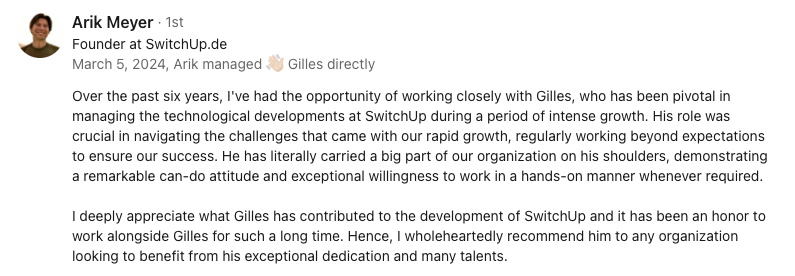Abstract:
The article explores the intricate regulatory landscape faced by European fintech startups, particularly focusing on the challenges posed by GDPR and PSD2, which demand stringent data protection while fostering open banking. These regulations require fintechs to carefully handle vast amounts of sensitive data, balancing innovation with compliance to avoid severe penalties. The piece highlights how traditional cloud solutions struggle with data compliance, prompting a shift towards fog computing, which processes data closer to its source. This approach not only aligns with data sovereignty requirements but also enhances efficiency, offering a promising solution for real-time financial services. Through examples like Banco Santander and Deutsche Bank, the article illustrates how fog computing aids in meeting regulatory demands while driving innovation, enabling faster and more secure transactions. By integrating fog computing, fintechs can optimize infrastructure, ensure seamless interoperability, and balance cost with scalability, ultimately paving the way for more personalized and secure financial services in the evolving fintech landscape.
Navigating the regulatory maze of the European fintech sector can be challenging for many startups. With the General Data Protection Regulation (GDPR) and the Payment Services Directive 2 (PSD2) providing the framework, fintech companies constantly balance innovation with compliance. These rules protect consumer data but also pose challenges for young companies eager to innovate.
Managing large amounts of sensitive data while meeting strict data protection laws is stressful. Mistakes can lead to hefty fines or loss of customer trust. However, within these constraints, there's room for creativity and growth. Fog computing, for instance, not only helps meet regulatory demands but also boosts efficiency.
We'll explore how European fintech firms handle these rules while pushing for innovation. From cloud setups to using fog computing, see how startups turn challenges into growth opportunities.
Regulatory Challenges in European Fintech
Dealing with complex regulations is a key hurdle for fintech startups in Europe. Two major rules that guide these companies are GDPR and PSD2. While essential for consumer protection, these frameworks demand careful data handling.
Key Regulations Shaping Fintech Operations
GDPR ensures data protection and privacy, requiring strict controls on data collection and use. Fintechs must be precise with data operations to comply. PSD2 encourages open banking, so fintechs must securely connect with traditional banks. During my time in Berlin, I observed how these regulations could inspire and hinder innovation as startups aligned their technologies with these data laws. I recall a startup that creatively adapted its services to fit within these frameworks, illustrating the push-and-pull between regulation and innovation.
These regulations deeply impact fintech startups managing large volumes of sensitive data. While innovating quickly, they must integrate compliance checks and data management protocols into core operations. This balancing act is challenging, as startups ensure their innovations protect user data and follow regulations.
Challenges with Cloud Infrastructure in Compliance
Traditional cloud setups can struggle with GDPR compliance, especially with data sovereignty and localization. Data often travels across borders, risking non-compliance. Keeping data within specific regions to meet rules is tough. So, fintechs look for solutions to match these data protection standards.
Besides compliance, fintechs face technical challenges like maintaining security and managing vendor relationships. Ensuring cloud providers follow strict security protocols can be daunting. This includes closely watching vendor activities to meet compliance standards. Such complexities push fintechs to adopt new approaches like fog computing, which processes data closer to its source, helping with compliance while encouraging innovation.
Leveraging Fog Computing for Compliance
As fintechs deal with changing regulations, fog computing becomes a valuable tool for compliance. By processing data closer to its source, this approach enhances privacy and security, aligning with European data laws.
Enhancing Data Privacy and Security
- Localized Data Processing: Fog computing offers privacy benefits through localized data processing, reducing network data transfer. This aligns with GDPR principles, emphasizing data minimization. Sensitive data stays local, lowering breach risks during transmission.
- Encryption and Access Control: With fog computing, encryption and strict access control are key. They ensure only authorized users access data, protecting against breaches. Robust encryption and authentication secure data at the source, helping fintechs meet complex regulations.
Meeting Compliance Requirements
To use fog computing effectively, specific architectures can satisfy European data laws. For instance, a system with real-time local data processing aligns with GDPR's data residency mandates. Distributing tasks across nodes enhances resilience and ensures compliant data handling.
Banco Santander is a real-world example. Using fog computing, they've reduced latency and adhered to GDPR, demonstrating fog computing's potential for compliance and agility.
Driving Innovation with Fog Computing
In the European fintech scene, balancing innovation with compliance is key, and fog computing offers a transformative solution. It aids real-time services and improves user experiences.
Real-time Financial Services
Local data processing transforms financial transactions. When data processes near its source, latency drops, speeding up transactions. This speed is crucial in real-time financial services.
Several fintech startups benefit from this. By integrating fog computing, they offer faster payment processing. Consider a trading firm where delays could cost millions; fog computing reduces that risk. This approach not only boosts transaction speed but also improves user experience.
Case Studies of Successful Integration
BBVA uses fog computing to enhance real-time analytics for PSD2 compliance. This allows efficient data processing, ensuring quick, compliant regulatory responses.
Deutsche Bank showcases fog computing's impact on digital services and GDPR compliance. Local transaction processing improves digital offerings, providing faster, secure service. This integration boosts efficiency while meeting data protection laws.
Strategies for Integrating Fog Computing
Successful fog computing integration requires strategic planning. This section offers insights for optimizing systems and ensuring interoperability.
Optimizing Existing Infrastructure
Conducting a thorough infrastructure audit helps integrate fog computing. This step identifies areas for performance and security improvement.
Once identified, middleware solutions are key. Middleware bridges data aggregation and distribution across computing layers. It ensures efficient data management and processing, enhancing compliance with regulations like GDPR.
Ensuring Seamless Interoperability
Adhering to industry standards ensures interoperability between cloud, fog, and edge systems. Standards allow effective system communication, crucial for fintechs expanding technological capabilities.
Security is also critical. Fintechs must enhance security protocols to protect data across systems. Layered security approaches mitigate unauthorized access risks. These measures, along with regular audits, help maintain system integrity.
With these strategies, fintechs can balance cost and scalability when adopting fog computing.
Balancing Cost and Scalability in Fog Computing
In fintech, using fog computing effectively means balancing cost and scalability. As technology evolves, fintechs must navigate these aspects to benefit from fog computing without straining resources.
Cost-effective Deployment
Using existing hardware and open-source platforms reduces deployment costs while allowing innovation. This strategy aligns with startups' budget constraints.
Containerization and microservices architecture help manage resources. These technologies break down applications into smaller parts, enhancing resource management and enabling seamless scaling.
Scalability Strategies
Adopting hybrid cloud strategies offers scalability advantages. Combining fog and cloud computing allows fintechs to enjoy localized benefits while leveraging cloud resources.
Partnering with telecom providers enhances scalability while controlling costs. Telecom infrastructure reduces the need for fintechs to build from scratch, supporting efficient fog computing deployment.
By using these strategies, fintechs can deploy fog computing effectively while ensuring scalability and cost-efficiency.
Future Outlook of Fog Computing in European Fintech
The potential of fog computing in reshaping European fintech is significant, leading to more localized and efficient data processing solutions.
Emerging Trends
The next few years will see real-time analytics and IoT integration in fintech, powered by fog computing. Localized processing reduces latency, vital for services like fraud detection.
Fog computing also bolsters data security and compliance. As regulations evolve, managing sensitive data securely is critical. Fog computing offers security by processing data locally.
Predictions for the Future
Technological advancements and regulation changes will drive wider fog computing adoption in fintech. This shift will lead to more personalized financial services, as companies use localized analytics for tailored experiences.
Fog computing is set to enable more personalized and secure financial services. By refining real-time data processing, fintechs can offer services based on immediate insights, enhancing customer satisfaction and compliance.
The European fintech scene is where innovation meets regulation. Startups must navigate frameworks like GDPR and PSD2, and fog computing is a strategic response. It allows local data processing, enhancing privacy and compliance. This not only meets regulatory demands but also boosts operational efficiency, enabling real-time services. As fintechs integrate fog computing, they're set to lead in providing secure, innovative financial solutions.
You might be interested by these articles:
- Navigating Fog, Edge, and IoT in Distributed Computing
- Fog Computing Applications
- The Rise of Fog Computing
See also:
- Gilles Crofils: Skills, Industries and Markets
- Transforming Customer Interactions through Datafication
- Revolutionizing Networks with SDN
- Laughing with AI: Navigating the Ethical Maze of Artificial Humor in Branding
- Navigating Talent Challenges in European Startups with Telepresence Innovation
- Transforming Recycling with Smart Tech





